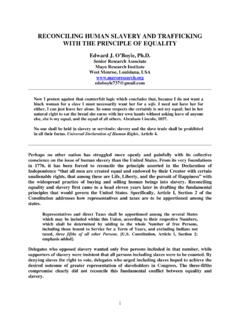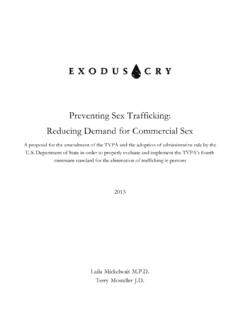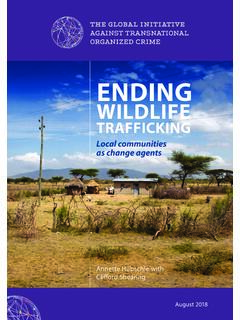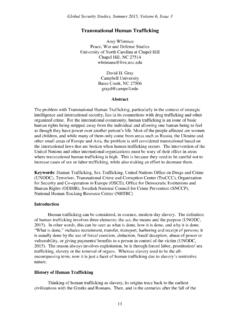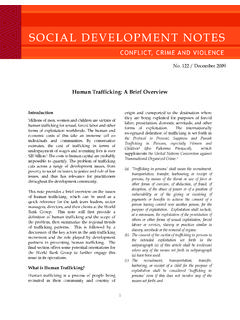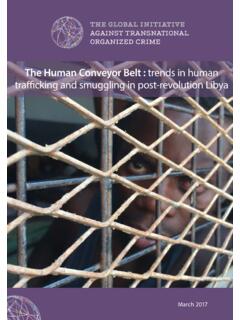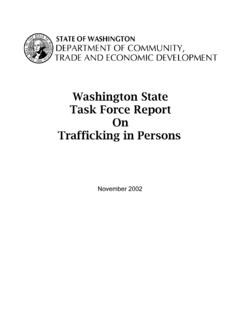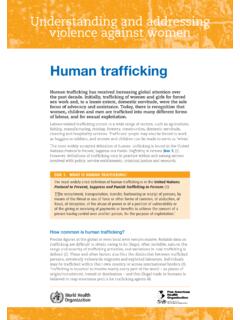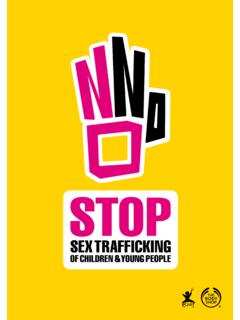Transcription of CNS Global Incidents and - nti.org
1 - 1 - Global Incidents and trafficking Database April 2017 CNS Global Incidents and trafficking DatabaseTracking publicly reported Incidents involvingnuclear and other radioactive materials2016 Annual ReportProduced Independently for the Nuclear Threat Initiative by the James Martin Center for Nonproliferation Studies - 2 - Global Incidents and trafficking Database ContentsExecutive SummaryI.
2 Introduction .. 6II. Materials and Data Overview .. 7 III. Key Findings and Policy Implications .. 101. Variable reporting transparency yields variable, low transparency, results ..102. Transportation creates greatest vulnerabilities ..123. Humans Fail ..164. Material Replacement ..17IV. Conclusion ..20V. Methodology ..20 April 2017 CNS Global Incidents AND trafficking DATABASE AcknowledgmentsThe 2016 report was authored by Shea Cotton, Philippe Mauger, Sam Meyer, and Jessica Varnum with research assistance from Anne Pellegrino, Megan Gularte, and Irene Yu.
3 The authors are also grateful to George Moore, Elena Sokova, and Bryan Lee for their valuable feedback on an earlier version of this text. - 3 - Global Incidents and trafficking Database Executive SummaryAt the 2016 Nuclear Security Summit, world leaders called nuclear and radiological terrorism one of the greatest challenges to international security. 1 However, there are no plans to hold additional summits, and prospects for sustained international cooperation at the highest level on nuclear and radiological security are uncertain.
4 Ongoing conflicts worldwide, whether in Syria or Yemen, Mali or Ukraine, complicate security efforts in many countries. There is a continuing risk that other countries, facing leadership changes or fiscal constraints, might deprioritize nuclear and radiological security the threat remains undiminished: the revelation in early 2016 that Islamic State operatives were monitoring a Belgian nuclear power plant suggests that terrorists continue to explore ways to access nuclear and other radioactive materials or As in previous years, almost half the Incidents in the 2016 database would be suitable for use in a radiological dispersal device (RDD).
5 3 Clearly, radioactive materials, perhaps even including nuclear materials, are still within the reach of malicious individuals or 2016, The James Martin Center for Nonproliferation Studies (CNS) review of open source reports found a total of 143 Incidents of nuclear or other radioactive materials outside of regulatory control, which occurred in 19 countries. Since CNS began tracking Incidents in 2013, researchers have identified a total of 683 Incidents occurring in 48 involving nuclear materials (uranium, plutonium, and thorium) are of special concern.
6 In 2016, ten of these Incidents occurred but none involved weapons-usable nuclear material. There were 53 reported Incidents involving nuclear materials between 2013 and 2016. In 2016, few recorded Incidents involved the most dangerous radioactive materials. The IAEA has a five-point categorization system for radioactive materials and sources, where a Category 1 source poses the greatest danger to human health. In addition to the type of radioactive material involved, the amount of material present in a source frequently affects what category it falls under.
7 No reported Category 1 Incidents and only three Category 2 source Incidents occurred in 2016. From 2013 to 2016, four cases involved a Category 1 source, and 24 involved a Category 2 source. Although Categories 3-5 materials are considered by the IAEA to present a lower risk, in high enough quantities they still pose a significant risk. These lower category materials constituted the majority of 2016 2016 data reinforces the trends identified in previous editions of the annual report . The consistency of these findings over four years lends additional weight to the policy recommendations expressed below.
8 Key Finding 1: Voluntary reporting yields variable, low transparency, resultsThe total incident count varies widely by country. This is partly because of countries highly variable reporting and transparency. Very few countries routinely and systematically report all Incidents involving the loss of radioactive material to the public. Those that do routinely publicly report Incidents have the bulk of the Incidents in this database: of 2016 cases (124 Incidents ) occurred in the United States, Canada, France, Belgium, and Japan, the six countries that most routinely publish Incidents online.
9 CNS database entries from other countries are derived from case-by-case official reports or unofficial media accounts. - 4 - Global Incidents and trafficking Database The IAEA maintains a confidential Incident and trafficking Database (ITDB), which is generated from voluntary reporting by countries. However, what countries report to the ITDB varies widely and there is no legally binding obligation to report the loss of even the most dangerous radioactive materials and sources to the ITDB.
10 The IAEA publicly releases only a statistical summary of the ITDB, not details of individual Incidents . Fragmented reporting, both in countries confidential reports to the IAEA and in their public disclosures, makes it impossible to get an accurate picture of nuclear and radiological security Recommendation: Develop a common standard for incident reporting which requires reporting Category 1 and 2 Incidents ; encourage wider reporting transparencyPast reports recommended that states adopt a universal reporting standard.

